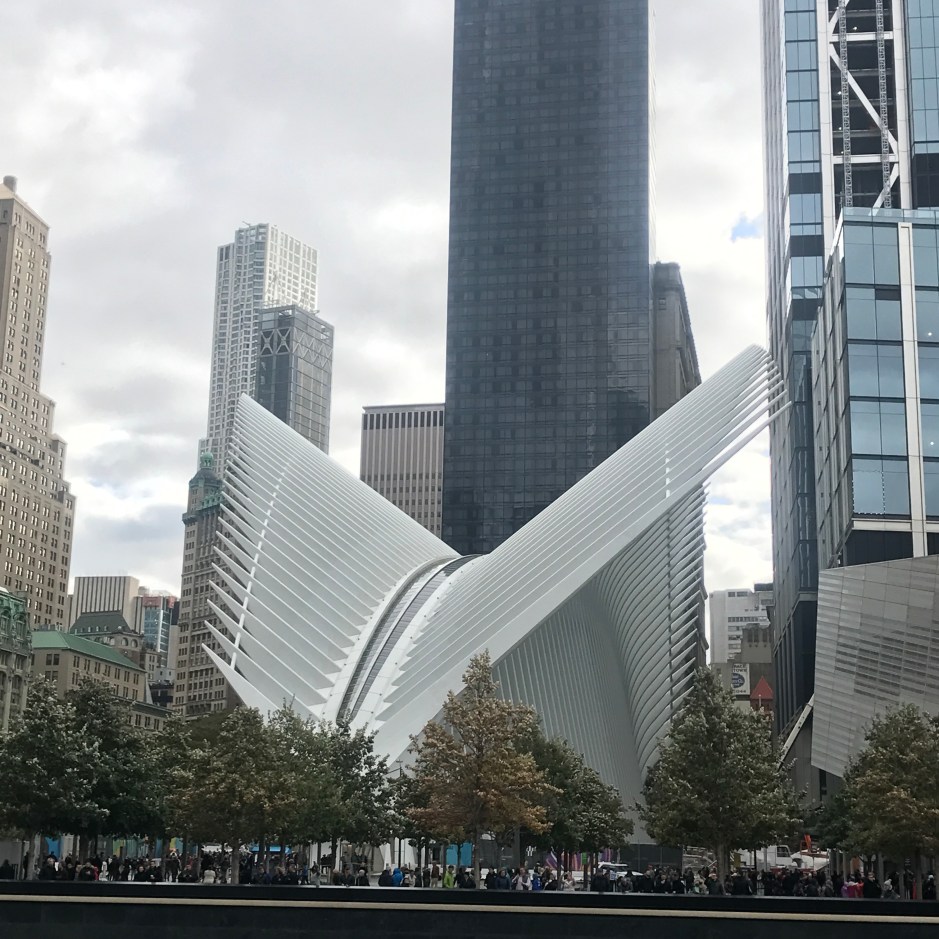For over a decade after the events of 9/11/01, I avoided the area where the World Trade Center had once stood. The enormous gap in the lower Manhattan skyline, achingly obvious from any vantage point, was almost unbearably immediate when felt from street level while negotiating barriers set up for the clean up and eventual rebuilding of this area. Over time New Yorkers began to see One World Trade rise, just off to the side of that empty skyline space, and witness the completion of the 9/11 museum and memorial reflecting pools. In 2016, the area has blossomed fully into the revitalized part of the city that everyone had hoped it could become. As a person who loves to take an unplanned walk in an urban environment (see my initial blog post about the process here), I recently took the subway down to Fulton Street and began to wander.
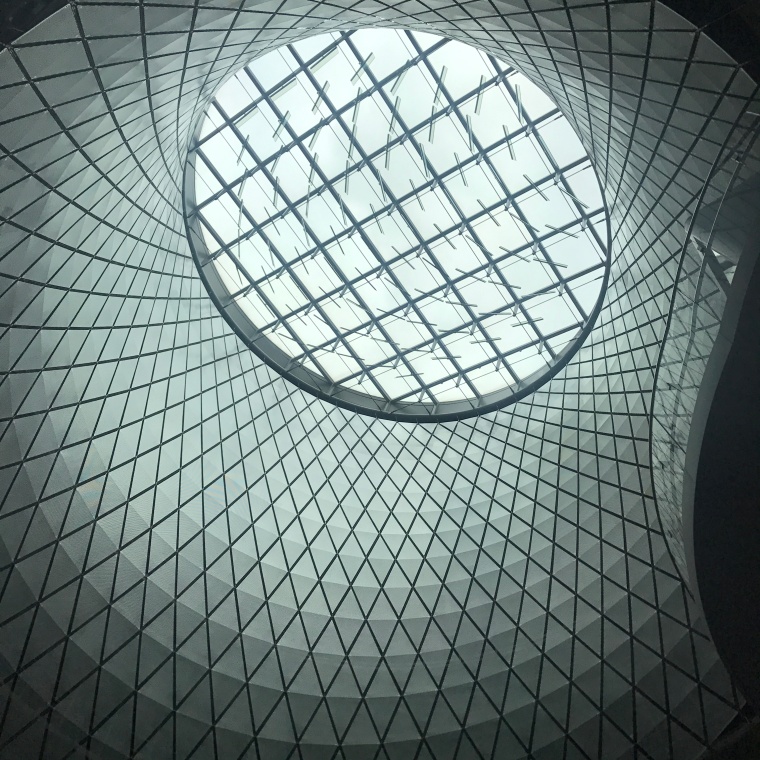
Almost any subway line can get you to Fulton (2 3 4 5 A C J Z N R W). The Fulton Center transit hub is gorgeous, with the Sky-Reflector Net as its focal point. Hundreds of mirrors reflect sunlight from a massive skylight down four stories to retail shopping areas below.
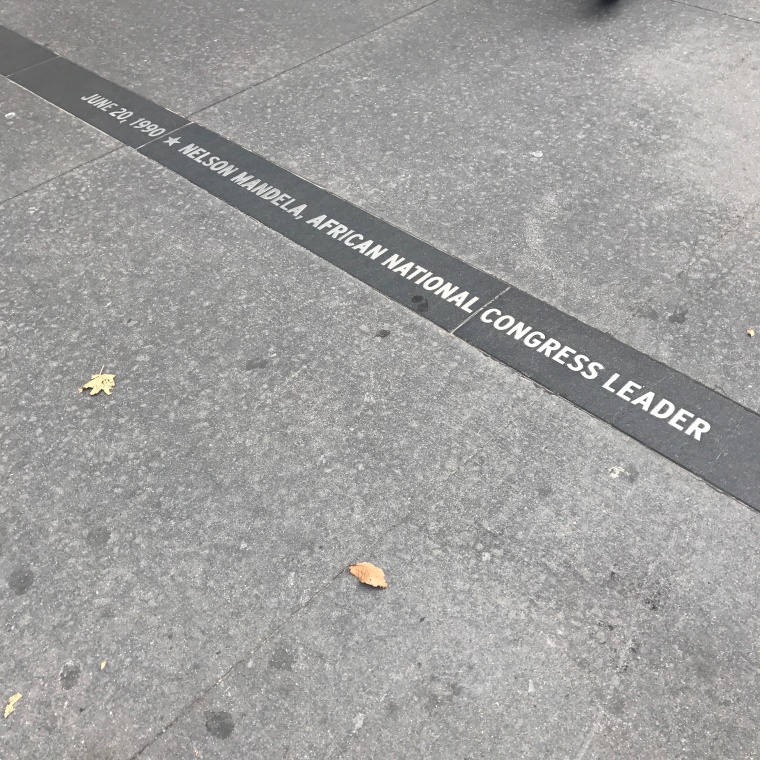
Emerging from Fulton onto Broadway, be sure to look down. This is the “Canyon of Heroes” where ticker tape parades have been held throughout the centuries, from celebration of the finishing of the Brooklyn Bridge to the safe return from the moon of the Apollo astronauts. Markers along the sidewalk note the various achievements celebrated in this way.
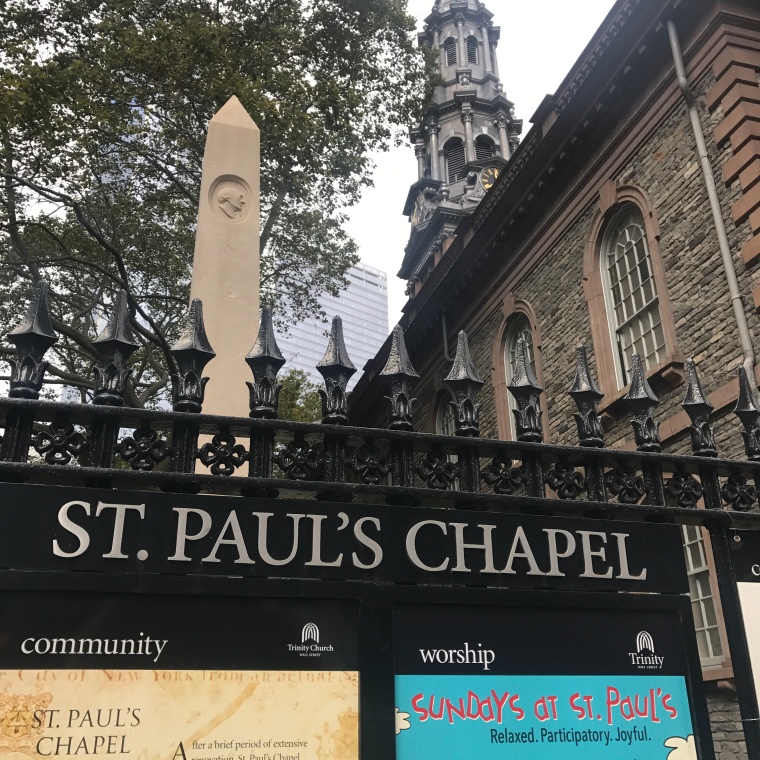
Almost immediately I came across St. Paul’s Chapel, built in 1766 and the oldest surviving church building in the United States. This gorgeous Georgian building was designed after London’s St-Martin-in-the-Fields, and is a National Historic Landmark. George Washington worshipped here on his Inauguration Day, and the church has survived not only the great fire of 1776 when a quarter of the city was destroyed by the British, but also was unscathed by the events of 9/11, becoming instead a place for recovery workers to rest and receive counseling.
Turning west on Vesey Street, it is impossible to miss Santiago Calatrava’s World Trade Center Transportation Hub, now often just referred to as the Oculus. As a transportation center, it primarily serves New Jersey PATH commuter trains, and is filled with retail including an Apple Store. The striking architectural style is apparent both outside and within. The exposed bleached bones of the building seem to echo to me the vertical exterior girders of the original World Trade Center. From the strip of skylight running along the roof, you can catch glimpses of One World Trade, and on clear days, puffy clouds. In my opinion, it’s thrilling, and also spiritually uplifting, befitting its location.
From the lower levels of the Oculus, you can walk underground to reach the Winter Garden Atrium as well as all the shops at Brookfield Place, a major new shopping area (dare I say “mall”?). The Winter Garden holds various free public concerts and other art events throughout the year.
One of my favorite areas in this part of Brookfield Place is Le District, kind of a French version of Eataly (a second location of which is in the Oculus shopping area, by the way).
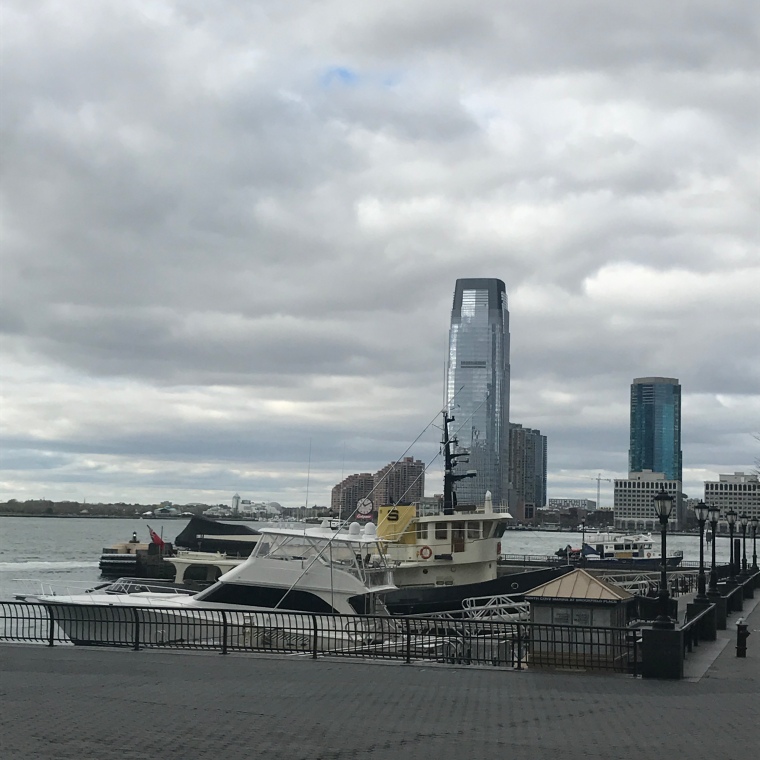
Continuing west out of Le District, the Hudson River awaits. During the warmer months there are areas to eat outside while watching boats go by (I highly recommend the P.J. Clarke’s there for that purpose).
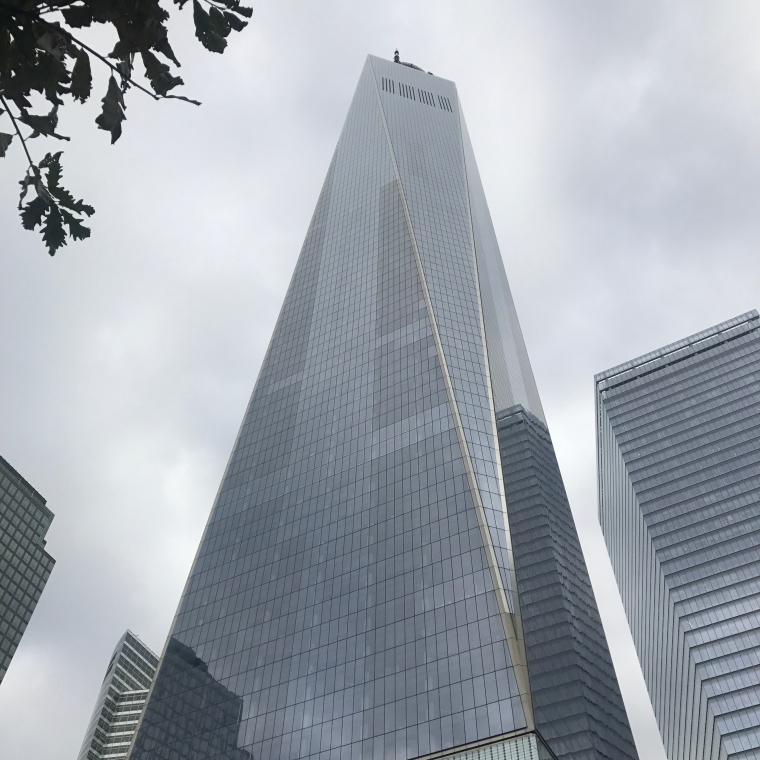
Heading east again, I stayed above ground. The area, of course, is dominated by One World Trade (once dubbed the Freedom Tower). Now bustling with business, and with an observatory in the top, it is the iconic symbol of this reborn area. This neighborhood is bursting with new real estate developments as well – I have recently viewed 100 Barclay and Thirty Park Place, for instance, both of which have direct close-up views of One World Trade. With all the new shopping and dining opportunities in the area, someone purchasing here no longer has to feel isolated from the bustle of the city.
Of course, One World Trade lies just to the north of where the World Trade Center once stood. The footprints of the giant towers are now reflecting pools surrounded by the names of those who lost their lives there. The National 9/11 Museum is next to the reflecting pools, and it is a worthy if sobering place to visit if you have not been (I went about two years ago with my father). If you see a flower stuck into one of the carved names, know that it is that person’s birthday – the site keeps track of birthdays and memorializes each person each year on that day.
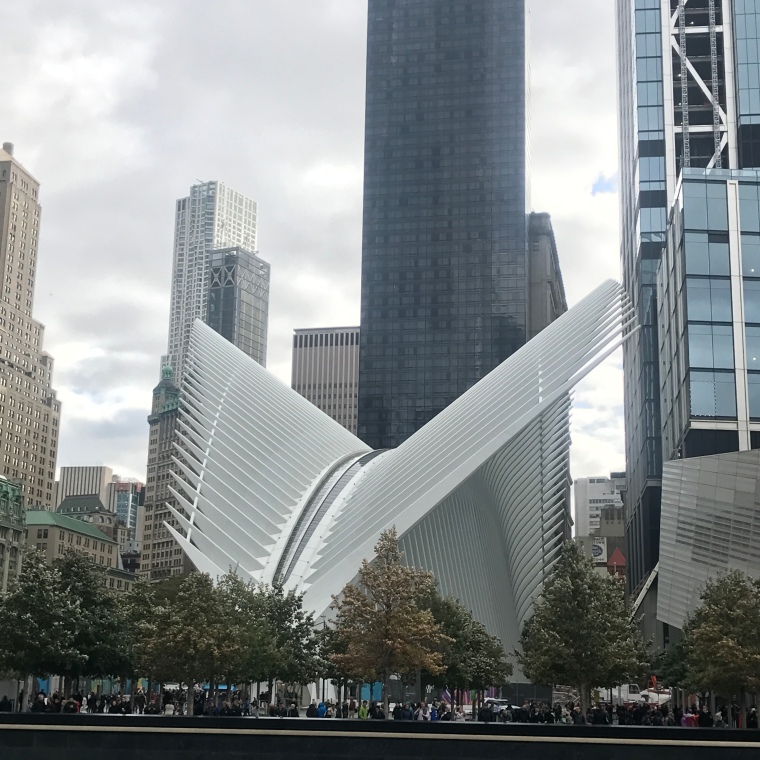
To the east of the reflecting pools, Calatrava’s Oculus soars. It is said that it was meant to symbolize a dove of peace being released from a child’s hand. To me, it seems as if it is a great prehistoric bird, perhaps just landed or just taking off, guarding this most sacred space. Like a phoenix reborn from the ashes, this part of New York City suggests our tremendous resilience and our unbounded hope for the future.

